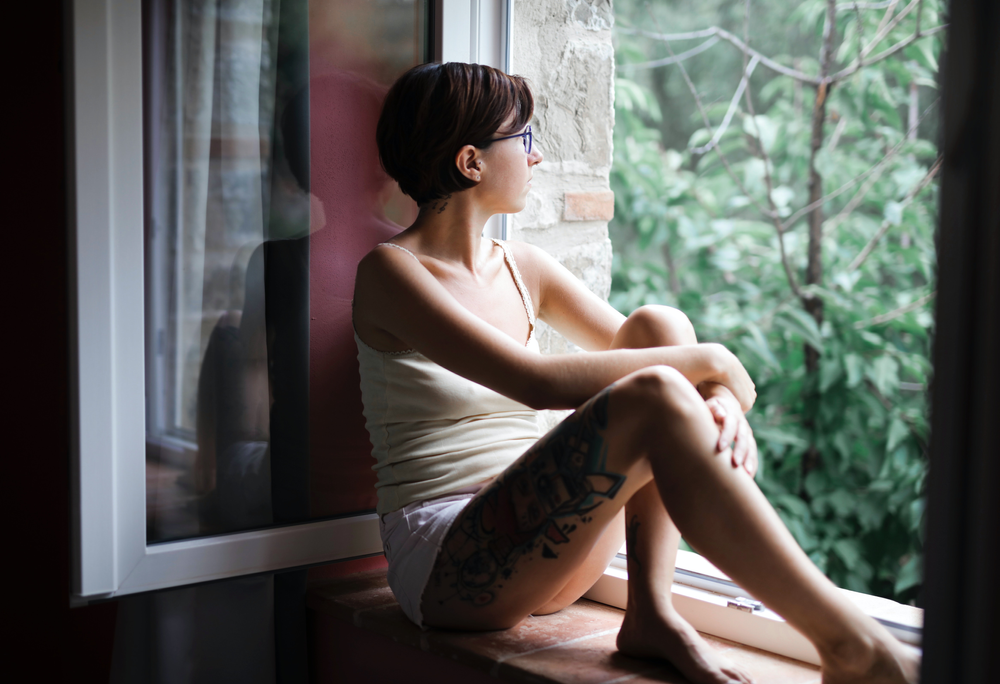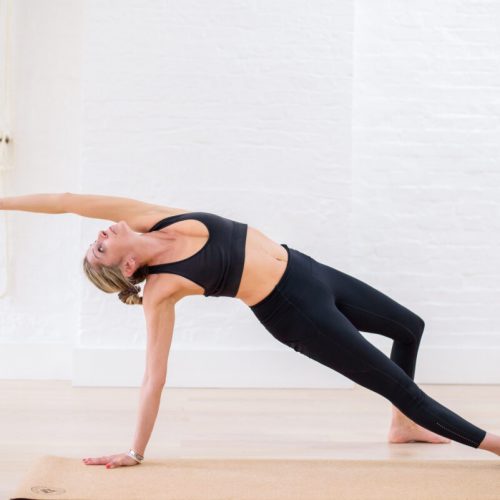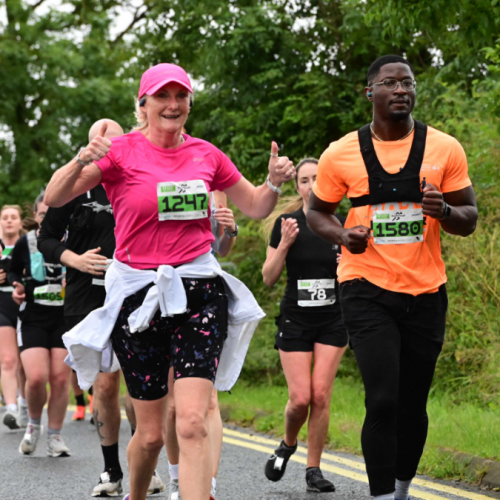I don’t remember what day it was or even what month. I remember what I was wearing: an oversized, faded, grey t-shirt with a picture of a sazerac cocktail on the front and worn lettering that read, “The glass is always half full.”
Oh the irony!
I’d bought that shirt about four years prior, meant to act as a disclaimer as I ushered in an era of playdates and Mommy and Me groups: “I’m not some boring Mommy, who left her social life in the delivery room. I’m still cool. I even wear shirts with hip cocktails. Come! Be my friend, and together we shall raise hell on the playground!”
I’m pretty sure the other moms didn’t take it that way. I’m pretty sure the other moms didn’t care. They were too busy making their own disclaimers like highlighted hair that never showed roots (moms who have their shit together), designer diaper bags (rich moms), and extensive knowledge of the exact moment in which each and every milestone should be reached (moms I want to punch.) Some of us are late bloomers, Karen, who won’t pick up an organic Cheerio with our thumb and index finger until we’re twelve months old. And furthermore, your little genius uses his superior hand-to-mouth coordination to eat boogers that I assure you aren’t organic. Here, have a sazerac.
When I was pregnant with my daughter, I’d started wearing that sazerac shirt as my lounging top because it felt soft against my expanding abdomen. After the baby came, I continued to wear it, but only as a pajama top because what began as a fitted female cut had become a baggy, unflattering lopsided cut upon which the images had exaggerated by way of my huge belly distorting them. I looked like a living, breathing, fun house mirror. But I remember wearing that shirt on the afternoon in question, the one in which I know not the day nor the month, for two reasons: one, because it was about the tenth day in a row I’d worn it, and two, because that was the last day I ever wore that crappy t-shirt again.
It was two o’clock in the afternoon, and my husband had walked into the playroom to find me in the sloppy sazerac shirt and paisley pajama bottoms, seated at the little craft table, staring blankly out the window. There were Barbie limbs and Legos and wads of construction paper scattered across the floor, shining in the sunlight that streamed in through the window that held my attention. He usually missed this pathetic mid-day scene because I’d always quickly change before he came home from work. I’d throw on something less “Girl Interrupted,” like a shirt dress or some clean yoga pants and a tank (Still in my workout clothes, Honey. Phew! What a day!) But on this day, he happened to stop in for a sports jacket he needed for an early business dinner.
“Honey?”
He was cautious, like he’d never met this woman, who looked like his wife, but certainly wasn’t the same wife who imitated Sally O’Malley at parties and could sing every lyric to “Informer.”
I said nothing.
I could sense his shoulders dropping and I knew his hands were in his pockets too–a symbol of resignation. He wouldn’t be going to that early dinner. He wouldn’t be going anywhere until this–this thing possessing his wife–was expelled from our home.
Maybe it was his stare. I was seen. Someone who knew better saw me for what I was. I guess it was that acknowledgement because I began to cry, not a dramatic gush of emotion. It was more like an infected wound slowly draining.
“I don’t know how I got here.”
I said those words to the window, the trees beyond, and whatever else was out there that could mercifully boomerang an answer back.
All he said was, “Look at me.”
It was exhausting to do just that, turn around and look, but when I did his eyes said everything — pity and love, mixed with anger because I wasn’t fighting for an answer.
How did I get here? How did I get here?
Only I wasn’t sure what “here” was. “Here” looked partially complete, like that addition in the back of my grandparents’ house. The bathroom had been fitted and installed, but the walls were still just sheetrock. “Here” made me sleepy. I just wanted to reach that end-of-day moment when my face was washed, my teeth were brushed, and I could stretch out on my bed and sleep. “Here” was laden with guilt. Only shitty mothers describe their life with such contempt as “I don’t know how I got here.” What a brat! “Here” was underwhelming. Under the sazerac shirt, my heartstrings strummed to an acoustic guitar playing a rather abysmal score: Is this really it? But, more than anything “here” felt rooted, a rut I dug myself into long before my days involved cheese cut into star shapes and playdates with Karen.
I had been seen. Thus, my age-old need (or problem?) arose in which I had to look like I was in control even while out of control, like one of those drunks who says, “I got it!” even as she trips over her own feet. So, I showered, stuffed that nasty sazerac shirt in the bottom of my pajama drawer, and determined that if I could at least look like me, I could behave like me. I can’t say that that little act of defiance against my demons didn’t help a little, but “here” remained unanswered.
Then one night, I read my children “The Lion and the Little Red Bird.” On a two-page spread was a picture of a mountain range with ice caps and a green valley below. I don’t know why. Maybe it was God, or an angel with a soft spot for hot messes, or that depressing acoustic guitar in my heart strumming a new tune, but I was fixated on that mountain range. In my mind, I saw a young girl traversing across those mountains, searching for something. For what — I hadn’t a clue. But this girl, who wasn’t even in the book, haunted me.
So after several days of wearing clean, presentable clothes (control!) and thoughts about some kid stuck on a mountain range (delusions?), I fired up my laptop. I wrote an entire book about a girl, who ran away from home, crossed a mountain range, and discovered that she was the daughter of an exiled ballerina and that she, too, had the talent to become a prima ballerina herself. Then I wrote another book, not about a mountain, but about a sorority girl in the mid-nineties, who had a penchant for alternative rock and mocha-colored lipstick (hmm…that sounds familiar) but who also was obsessed with some jerk who couldn’t see how fabulous she was. Of course, she was the real problem. She didn’t know how freaking badass she truly was and could have saved herself a lot of tears and hangovers if only she could’ve seen herself as others had.
I attempted to query the first book, but I never could describe it well enough to agents. Was it fantasy? Was it fiction? It had a whole chapter with these little dwarf-like creatures and also trees with supernatural powers that petrified lovers into their trunks. I mean, the ballet part was interesting, but the rest of it was kind of weird. So I eventually just stopped trying to make anything of that “Hobbit” meets “Swan Lake” story. As for the other book, when I got to the end, I thought, “Did I just write a CW teen drama with a heartfelt tribute to Dave Grohl and Chris Cornell as its only redeeming quality?”
So both manuscripts sat on my desktop and eyed me whenever I opened Facebook or started Google searches like, “women who were late bloomers.” It was the day I read that Lucille Ball was forty-years-old when the first season of “I Love Lucy” aired that I also realized it had been more than two years since I’d worn the sazerac shirt. It occurred to me that I wasn’t just getting dressed every day. I wasn’t even surviving from day to day. I was creating. I was researching. I was curious. I was alive. I wasn’t “here” anymore.
But I also wasn’t “there”– whatever “there” was, a place undiscovered.
One day it hit me: the young ballerina in search of her destiny; the angsty sorority girl who could only see what she wasn’t. Holy hell, I’m writing about me! Damn, am I dense. It was so obvious! (You probably cracked that riddle five paragraphs up.) But what did I want? And what was it I didn’t think I had?
With each novel, albeit emotionally heightened, I was getting closer to understanding “here” and “there.” Then a Woman’s Day magazine headline caught my attention: “17 Signs You’re Having a Midlife Crisis,” Wait. Women can have a midlife crisis? Apparently they could, and I fit 13 of the 17 signs the article described. One stood out from the rest: “ Number 16: You think your best years are behind you.” I dwelled on 16 like it was a pimple I was trying to pop.
But I’d chosen the sensible degree, got married, had children, bought the house in the neighborhood with the good school and a Wal-Mart fifteen minutes away. Weren’t they supposed to negate all angst? One afternoon my neighbor came over for a glass of wine and when I mentioned how restless I felt, she said, “You’ve got three kids and a beautiful home. What more do you want?”
Was it something I wanted or something I wanted back? I’d seen myself as a world changer, a game maker, a boss, a rock star that would tilt the planet, so how come I felt like a middle-aged aspirational failure, who googled stuff like, “is aspirational failure an actual thing?”
I know enough to know that I wasn’t a failure, but I did need to adjust the dial. Recently, I eyed the two manuscripts on my desktop and whispered a gracious “thank you.” I would likely never see either on a bookstore shelf, but they had served their purpose. I think bravery can come in all shapes and sizes (like midlife crises). Sometimes it’s brave to pour your heart into something just for you and you alone because part of bravery is admitting what you need without asking permission. Those books brought me from zero to one–that place just above rock bottom when you decide to go toward something brighter than where you are, when your exuberance for “here” wanes and your curiosity about “there” shoves you forward. That’s what I needed.



